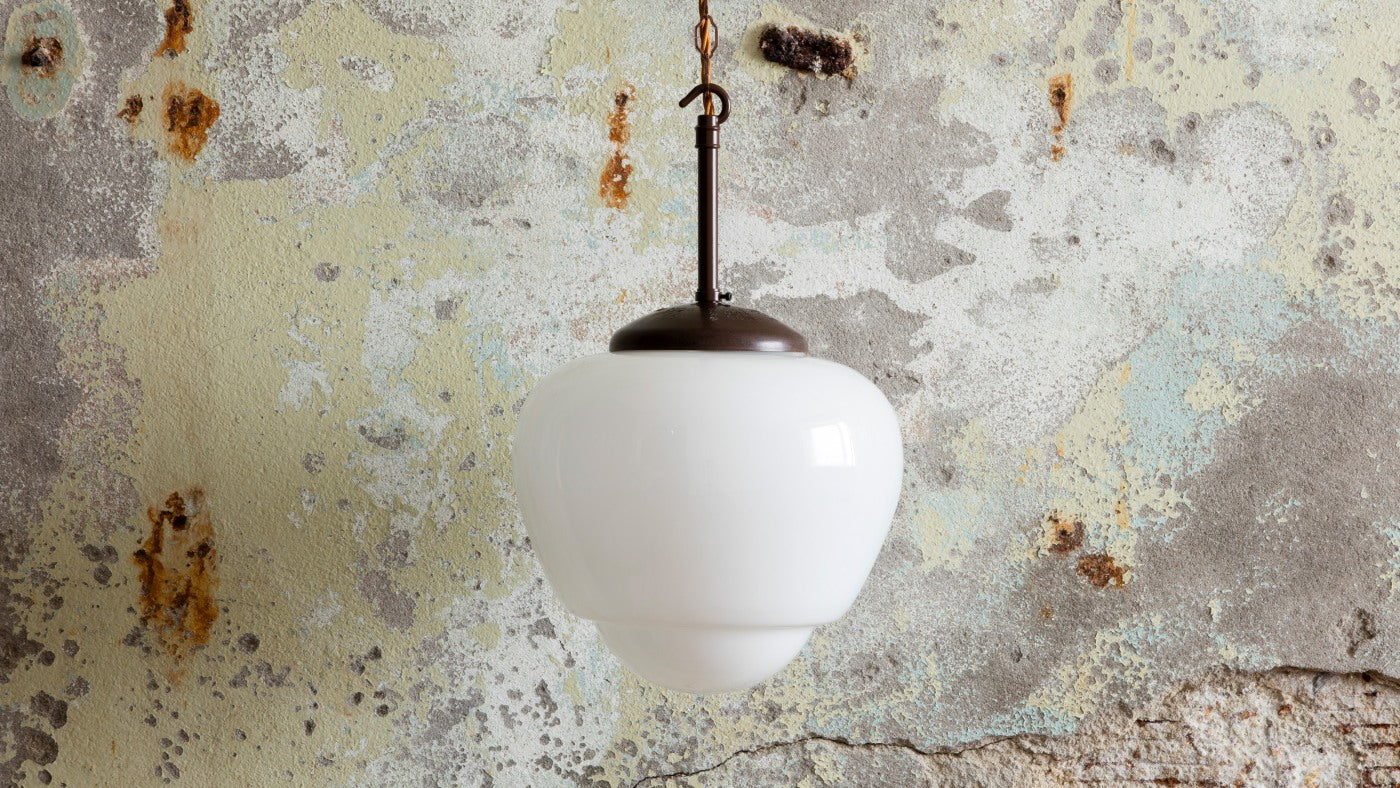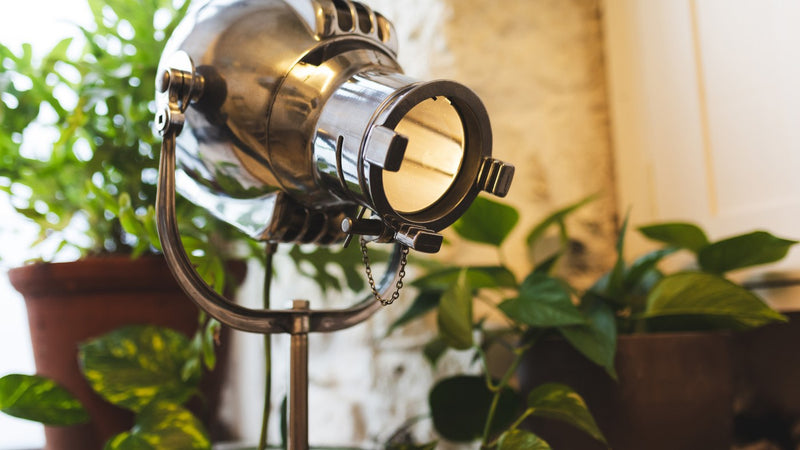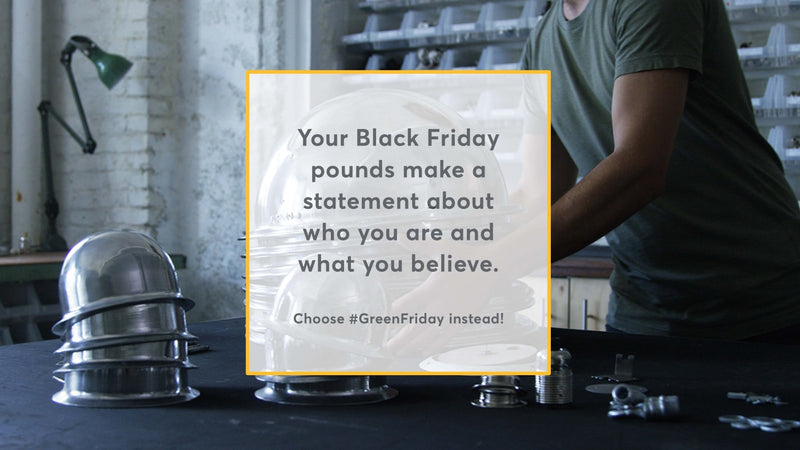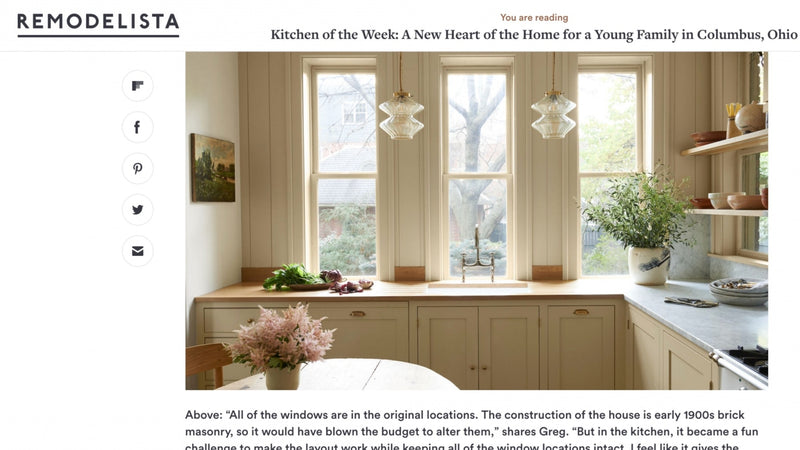
Why keep existing products in circulation?
The first of our series of blog posts on the #circulareconomy.
“What happens to our vintage lights when they’re not required any more?” This is a question we often asked ourselves at skinflint, and until now were troubled by. It’s a question that led us to the creation of the Full Circle buy-back scheme we’re proud to be launching.
Since our founding more than a decade ago, we feel fortunate that our business model has always revolved around the ethos of product circularity. This is the result of making conscious business decisions to only ever salvage and restore vintage lights rather than producing new and adding to the waste pile, as well as making conscious decisions that benefit our planet as well as our employees.
Whilst the circular economy - where resources are recovered at their highest quality and kept in circulation as long as possible - is not a new concept, it is becoming increasingly relevant as we seek an alternative to the current take-make-use-lose economic model driving over-consumption and climate change. Although we welcome the drive away from new mixed-material and non-recyclable light fixtures, we don’t believe this approach goes far enough.
At skinflint we’re afforded the opportunity to take our circular approach another step forward, transcending words such as sustainable or recyclable, by offering a full product circularity.
The lights we refurbish and retail were, in many instances, originally manufactured up to 100 years ago. They are extremely well engineered pieces, primarily produced from glass and high quality metals. In all instances the products themselves have not failed, more the building, industry or purpose for which the lights were originally intended.
We acknowledge the same situation occurs in modern-day commercial or residential interiors, where the original building’s design or purpose has changed, failed, or simply requires a refresh.
The solution?
To tackle future waste and to preserve the heritage of these lights, we have introduced Full Circle. The scheme allows customers to trade in their skinflint lights after a year of ownership in exchange for a 50% discount off their future purchase, thus closing the loop on the lifecycle of our lights. Returned items are then repaired, restored and recertified by our experts and placed back into the market.
By offering this form of circularity not only do we increase the lifecycle of the products, but we prevent them from being scrapped, or at best recycled, with each phase of circularity, thus decreasing the environmental impact of their initial production and resource.
This is our commitment to sustainability, keeping lights out of landfill and in use forever. The next chapter in the light’s life story is up to you.
Read more about our Full Circle buy-back scheme

What is the circular economy?
How it all began
Two hundred years ago, the Industrial Revolution laid the foundation for how our economy of today operates. The invention of the steam engine in 1684 transformed our ability to make things. Raw materials such as coal, and the energy produced, were seemingly infinite and labor was readily available. For the first time in history goods could be mass produced. But in doing so, we began uncoupling our relationship with nature.
How this looks today
Since the industrial revolution we have turned resources into an extraordinary number of products. The rapid pace of technological progress has continued. We now have access to products from all over the world at affordable prices. These products have brought many of us levels of material comfort unimaginable to previous generations. This success is largely on the back of natural resources being transformed into other forms of capital. Even today, our model of economic growth continues to be largely based on the excessive and intense use of finite natural resources.
Our way of doing things is reaching its limits, and the current system is no longer working for business people or the environment. We take resources from the ground to make products, which we use, and when we no longer want them we throw them away. Take-make-use-lose or take-make-waste. We call this a linear economy.
The future - a different way of doing business
The linear economy has to change. We must transform all of the elements of the take-make-waste-system: how we manage resources, how we make and use products, and what we do with the materials afterwards. This can be done by designing out waste and pollution, keeping products and materials in use, and by regenerating natural systems. This new circular economy system is absolutely achieveable and has far reaching benefits for individuals, businesses and our planet.
If you’d like to learn more about the Circular Economy and how we can benefit from it, we highly recommend visiting the Ellen MacArthur Foundation for a range of resources for both businesses and individuals.
You might also like
Planet Pay Back Promotion: 20% off
This Black Friday, we're doing #PlanetPayBack. It means you'll get 20% off our full range of lights and we'll also donate 20% to charity. It's a genuinely good deal for you, and the planet.
B CorpWhy we won't be participating in Black Friday
Every November the chaos of Black Friday descends upon us causing needless over-consumption. This year we hope you’ll join us in making a stand, by buying nothing and repairing something instead. #GreenFriday
SustainabilityRemodelista: Kitchen of the Week
Our vintage Czech hotel pendant lights have received lots of attention after featuring in US online-magazine Remodelista’s ‘Kitchen of the Week’.
In the press








